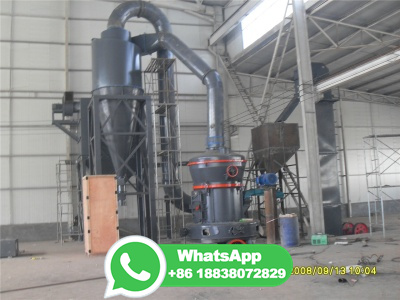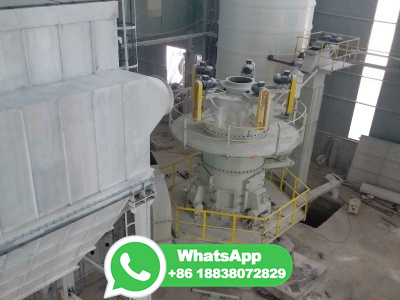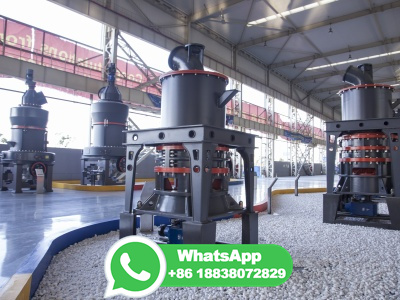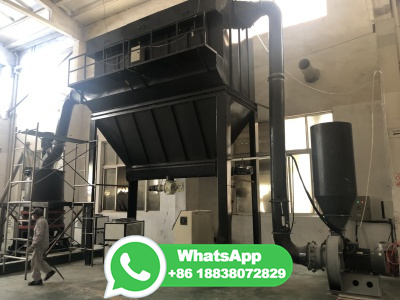
Mortar is cement mixed with sand or crushed stone that must be less than approximately 5 mm ( inch) in size.
WhatsApp: +86 18037808511
Finally, the most important factor is that the availability of the material resource. From the economical point of view, the material should be easily available in nature. This availability decides the cost of the material. So it is necessary to consider this factor as the major one in the selection of materials for the engineering purpose.
WhatsApp: +86 18037808511
The raw materials for these plasters are dry mix mortar. Plaster is made up of a mixture of lime, gypsum, or cement, as well as sand and water. With the growth of the construction and infrastructure industry, plaster manufacturers are also expected to witness significant growth opportunities in the forecast period.
WhatsApp: +86 18037808511
· The preferable mortar mix ratio for pointing is 1part mortar and either 4 or 5 parts building sand. The ratio will vary depending on what exactly is being pointed. For bricklaying, you will usually want a 1:4 ratio with plasticiser added to the mixture. For above DPC Airtech blocks, 5 parts building sand and 1part cement is preferable.
WhatsApp: +86 18037808511
· Such raw materials are limestone, clay and sand. Limestone is for calcium. It is combined with much smaller proportions of sand and clay. Sand clay fulfill the need of silicon, iron and aluminum. Extraction of raw material and crushing of material Generally cement plants are fixed where the quarry of limestone is near bye.
WhatsApp: +86 18037808511
Essentially and traditionally stucco and mortar are the same or very similar. They both contain three important components. Sand, cement, and lime. Modern innovations have obviously optimized each product for its specific use. Stucco materials will have latex and acrylic additives.
WhatsApp: +86 18037808511
The Major Equipment od Dry Mortar Production Line : The production line consists of storage system, metering and batching system, conveying system, mixing system, air compressor system, packaging system, and dedusting system, etc. The Raw Material of Dry Mortar Production Line: 1. Cementing material: cement, lime, plaster.
WhatsApp: +86 18037808511
Buildings and infrastructures can absorb CO2 from the atmosphere because of the carbonation process that affects the calcium hydroxide of concrete elements. The aim of this research project is to initiate the absorption at casting by adding dry ice pellets to cementbased mortars. Test results demonstrate that the flexural and compressive strength of the mortars are not modified .
WhatsApp: +86 18037808511
· Materials Requirement Planning MRP: One of the first software based integrated information systems designed to improve productivity for businesses. A materials requirement planning (MRP ...
WhatsApp: +86 18037808511
· The process is carried out in a blast furnace. It is obtained by quenching molten iron slag from a blast furnace in water or steam, then dried and ground into a fine powder. GGBS can be used as a partial replacement of OPC cement in concrete production at batching plants.
WhatsApp: +86 18037808511
· Raw material ingredient range approximate lime 6065% 63 Silica 1725% 21 Alumina 48% 6 Iron oxide 16% 3 Magnesia 13% Calcium sulphate 35% 4 Sulphur 13% 1 Alkalies % 6. Manufacturing Of Cement Mixing of .
WhatsApp: +86 18037808511
Introduction. The raw material for carbonisation, its gathering and preparation constitute the single most important aspect of charcoal manufacture no matter what method of carbonisation is used. In this chapter raw materials are divided into two groups: those derived from trees, wood in some form or other and those derived from ...
WhatsApp: +86 18037808511
· Molasses, curd, jute and fossilized soil were mixed with lime to serve as mortar and cementing material for the building. The Taj Majal is also famous for its use of a wide variety of semiprecious stones as a decorative element of the building.
WhatsApp: +86 18037808511
Sulfur cement melts at temperatures between 113° C and 121° C. Sulfur concrete is maintained at temperatures around 130° C during mixing and placing. The material gains strength quickly as it cools, and is resistant to acids and aggressive chemicals. Sulfur cement does not contain Portland or hydraulic cement. Other.
WhatsApp: +86 18037808511
· Lime mortar is composed of lime (hydraulic, or non hydraulic), water and an aggregate such as sand. Lime mortar today is primarily used in the conservation of existing old buildings or the recreation of new ones using traditional methods. Its use dates back at least 6,000 years, to the Ancient Egyptians who used lime to plaster the pyramids.
WhatsApp: +86 18037808511
(a) Cut mature bamboo and carry them out of the forest. (b) If necessary store bamboo in the shade, covering them with branches or large leaves. (c) Partially break or drill the partition walls inside the culms (see paragraphs 6 and 7). (d) As soon as possible, immerse the freshly cut bamboo into water (in a reservoir, river or pond).
WhatsApp: +86 18037808511
generated in the production of cellulose by the kraft mill process. It is mainly composed of CaCO 3, a small amount of magnesium carbonate and other trace minerals. Mortars were prepared by adding different amounts of LM (10, 20 and 30% by weight of cement) in dry weight. The mortar compositions were evaluated through
WhatsApp: +86 18037808511
It is generally added in very small amounts (about 2% by weight) to the burnt cement (called Clinker) after it is taken out from the kiln and before it is sent for grinding. Gypsum is a sedimentary rock having a composition of calcium sulfate (Ca SO 4. 2 H 2 O). It is added for imparting a retarding effect in the setting of cement.
WhatsApp: +86 18037808511
· 2. Calculate the average raw materials inventory. The easiest way to calculate average raw materials inventory is to add the beginning raw materials inventory value to the ending inventory value, then divide the sum by two. For example, if a company's starting raw materials inventory value at the beginning of its fiscal year was 20,000 and its ...
WhatsApp: +86 18037808511
· Cement is just the powder used to make mortar and concrete. Mortar has sand in it.
WhatsApp: +86 18037808511
· Roughly half of the raw materials we extract go into the world's built environment. Construction creates an estimated third of the world's overall waste, and at least 40% of the world's carbon ...
WhatsApp: +86 18037808511
bags of Cement (50 Kg each) Sand (Cu. ft.) Stone Aggregates 10 mm (Cu. ft.) Stone Aggregates 20 mm (Cu. ft.) Nos. of Bricks Reinforcement Steel (kg) building material quantity calculation is important before starting any construction work on site.
WhatsApp: +86 18037808511
· This is the process of mixing dry ingredients like sand, cement, and clay into a liquid to make mortar. The mixture can then be used in construction or for other purposes. Refractory mortar mix is a type of mortar that is used to hold bricks together. It can be made with different ratios depending on the appliion.
WhatsApp: +86 18037808511
The properties of construction materials, such as dry mortars and prefabried materials, are influenced by the quality of local raw materials. Therefore, interactions between organic and inorganic binders, fillers and a range of chemical additives need to be controlled to ensure the best performance of the system.
WhatsApp: +86 18037808511
· Waste glass powder, on the other hand, is a material that offers an excellent alternative to replace cement due to its wellknown pozzolanic properties. Hence, the combined behaviour of fine recycled concrete aggregates and glass powder of different particle sizes in mortars has been studied.
WhatsApp: +86 18037808511
Raw Materials Take high quality sand, soda ash, limestone, saltcake and dolomite and melt at white heat to a highly viscous consistency. Let the mixture digest for a time and you are well on the way to making one of the world's most important materials. This is the basic composition of float glass, one of the greatest of all industrial ...
WhatsApp: +86 18037808511
Mortar is a material used in masonry to fill the gaps between blocks in construction. It is a mixture of sand, a binder such as cement or lime, and water. The mixture is applied as a paste that then sets hard. The blocks may consist of stone, brick, concrete, or some other material. Contents 1 Gypsum mortar 2 Lime mortar 3 Portland cement mortar
WhatsApp: +86 18037808511
sponsibly sourced raw materials. Many factors influence the supply of raw materials, and a high growth rate, as seen in Figure 1 does not directly convert to a future raw materials supply bottleneck. This depends on the overall supply–demand balance. High demand may raise prices, in turn making exploration, mining and refining proj
WhatsApp: +86 18037808511
JK Lakshmi's Raw Material Calculator for construction is an online raw material calculator for house construction and building construction of a single storey ... Load bearing brick wall thickness of 23cm (9 inches) in cement mortar 1:6 2. Plaster in cement mortar 1:4 Note: We recommend JK Lakshmi RMC to save time and cost. Home Builders;
WhatsApp: +86 18037808511
MORTAR MATERIALS. ASTM International maintains national standards for mortars and materials commonly used in mortars, as follows: Portland cement (ASTM C150, ref. 4d) is a hydraulic cement (sets and hardens by chemical reaction with water) and is one of the main constituents of mortar. Types I (normal), II (moderate sulfate resistance), and III (high early .
WhatsApp: +86 18037808511
Class E lime is the kankar lime which is used for the masonry mortars and it is to be supplied in the hydrated form only. (6) Class F: Class F is the siliceous dolomitic lime which is used for undercoat and finishing coat of plaster. It is to be supplied in hydrated or quick form.
WhatsApp: +86 18037808511
A simple ocular examination can show: If the mortar were made for joints or plaster, the colour of the binder. If it is a mortar rich in lime or not. The content of small or large particles in the aggregate. 2 Impurities or additives such as crushed bricks, coal or .
WhatsApp: +86 18037808511